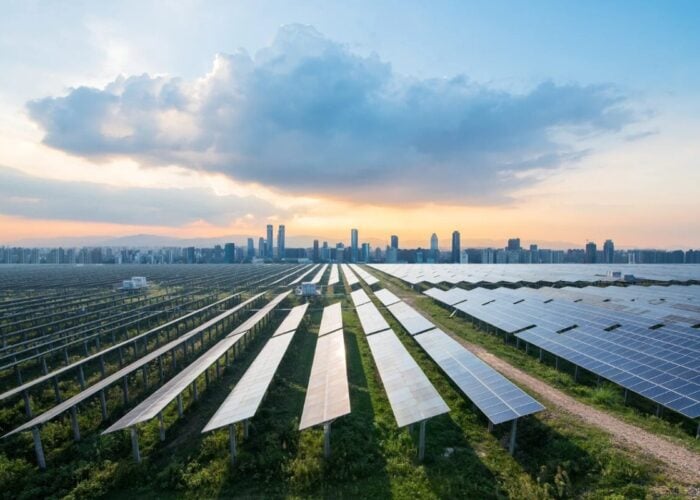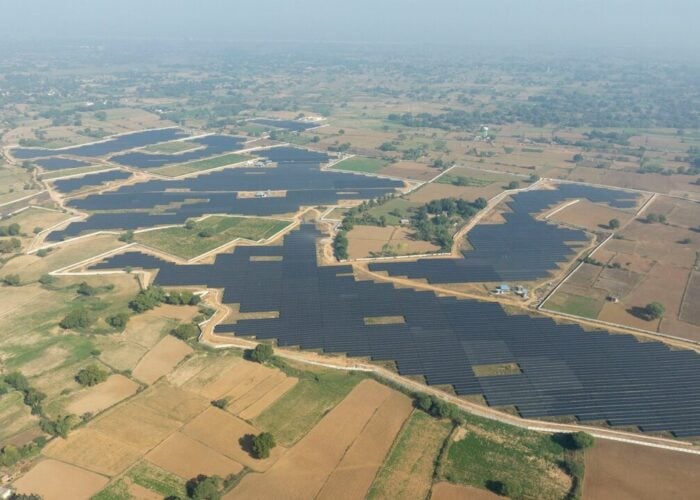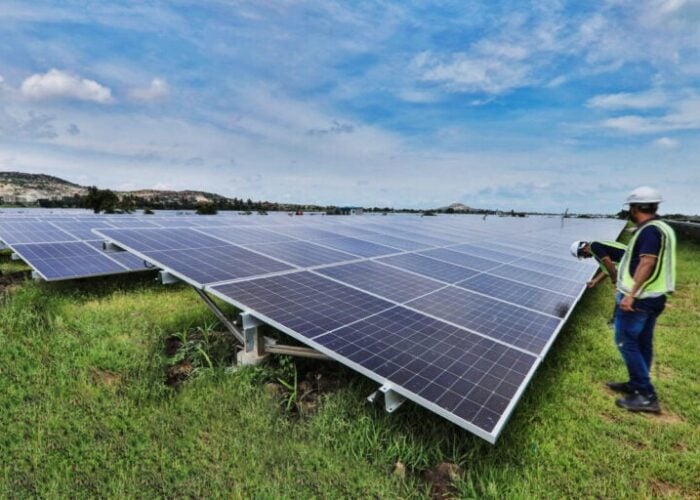
The price of developing solar projects in India has become so low that the market is now awash with heavyweight international players looking to exploit the country’s enviable solar resources. Gaetan Tibhergain, principal investment officer at International Finance Corporation (IFC), recently described India as having the “gold medal” of the world in terms of pricing and claimed there are no other countries where project costs are so attractive right now.
Correspondingly, the recent tariffs that developers have quoted to win capacity in the various state solar auctions have become low enough for some PV projects to be declared as having reached grid parity when compared to wind and greenfield coal-fired power plants. These winning tariffs hovering around the INR5/kWh (US$0.075) mark are described as “paradigm shifting” by some industry members, who have welcomed solar’s newfound cost-competitiveness, while others wary of project returns, viability and quality have branded it “madhouse bidding”.
Try Premium for just $1
- Full premium access for the first month at only $1
- Converts to an annual rate after 30 days unless cancelled
- Cancel anytime during the trial period
Premium Benefits
- Expert industry analysis and interviews
- Digital access to PV Tech Power journal
- Exclusive event discounts
Or get the full Premium subscription right away
Or continue reading this article for free
Euphoria around the prices will also have been curtailed after consultancy firm Bridge to India revealed that out of 1GW of projects allocated under state policies in the past two years, nearly 40% of the capacity is either significantly delayed or cancelled for various reasons.
In any case, since July this year when Canada-based firm SkyPower won 50MW in Madhya Pradesh with what was then a record low bid of INR5.05/kWh the prices have kept tumbling, with intense competition resulting in many PV giants being shouldered out of the running in various bids. SkyPower’s submission was far lower than the 5.45 rupee benchmark set for Viability Gap Funding (VGF) by the Indian government, which meant that utility-scale solar was approaching a scenario where it no longer required government subsidies for the first time.
For the most part, the prices now consistently fall well below 5.50 rupees per unit. To give some context, the average price of winnings bids in state auctions has dropped more than 60% in five years, from INR12.16/kWh in December 2010 to a jaw-dropping INR4.63/KWh in November this year, when renewables firm SunEdison scooped the entire 500MW of capacity available for the Ghani Solar Park in Andhra Pradesh.
Japanese developer SoftBank has now matched this tariff, winning 350MW also at INR4.63 in another solar park in the same state. Jasmeet Khurana, associate director, consulting, at Bridge to India, says these latest bids mean SkyPower’s tariff now “looks attractive”.
PV Tech attended the recent Intersolar India event in Mumbai to catch up with the industry and gain an in-depth insight into the reverse e-auction process, while frenetic debates about the sub-five rupee tariffs dominated the conference.
Ministry of New and Renewable Energy (MNRE) joint secretary Tarun Kapoor says it was the first time that low bids have been seen across the country – even spreading into agricultural powerhouse Punjab where land prices are very high and irradiation not as favourable as in other states. Originally Kapoor had expected tariffs to stabilise – MNRE set the VGF at what it believed was grid parity level – but Kapoor now believes that reductions could continue for another four or five months.
He adds: “The stable tariff as of today for the country is between INR5-5.50/kWh. Anything lower than five rupees is very good.”
Clearly Kapoor welcomes the reduction in tariffs, but there is a hint that fewer than five rupees may not be sustainable. He says competition is so fierce and numerous now that when MNRE holds a pre-bid meeting, it has to hire out a large hall to accommodate all the interested players.
More optimism has been shown by energy minister Piyush Goyal, who took to Twitter to express his approval in November:
Delighted that Solar Tariffs in India have broken Rs 5/kWh level. NTPC has received bids of Rs 4.8/ kWh through ongoing reverse e-bidding
— Piyush Goyal (@PiyushGoyal) November 3, 2015
But while the ministry is showing extreme positivity in public, some industry veterans appear alarmed. Even Jigar Shah, the well-known clean energy entrepreneur and co-founder of SunEdison, who leads specialist finance company Generate Capital, said in November that tariffs under six rupees in India make “no sense” and he called for the auction process to be scrapped.
It should be noted that developers face substantial fines and penalties if they do not commission their project within their allotted timeframes.
Nevertheless, Rajnesh Trivedi, senior director, sustainable investment banking, YES Bank, says the government will continue to encourage reverse bidding, because lower tariffs mean lower prices for the consumer. Furthermore if some capacity fails to be commissioned, it is only likely to be on a small-scale in the context of India’s wider 100GW solar target. “It will not change the overall complexion of the market,” Trivedi adds. Any failed capacity will come up for bidding again.
However, for many hopeful developers, the consequences of the lower prices are less comforting. In an industry update in November, Bridge to India wrote: “India is a very competitive market and the aggressiveness of the ongoing bids will determine whether or not many of these commitments materialise. The new competitive bidding process that led to tariffs falling to INR4.63/kWh will probably mean that many of these new players will continue to look at the market from the sidelines and hope for the competition to ease before they put down their money. While India offers a very large attractive market to solar developers and manufacturers, intense competition is driving pricing down and making the risk-reward unfavourable for them.”
Bridge to India’s report on 40% of allocated projects being delayed or cancelled over the last two years under state policies is reiterated by Kamal Maheshwari, president, smart cities, at Indian integrated utility and solar developer, Essel Infra. Projects have struggled to come up even with six rupee tariffs, says Maheshwari, so it is difficult to see how they can be commissioned at under INR5 tariffs in such a short time period. However the market is enormous and Maheshwari says that once 25-35GW of capacity has been bid out to aggressive and hungry players, capacity will be left open to more “reasonable” developers.
Over-ambition in some of the low bidding has already emerged. For example, in October Gayrajan Kohli, senior manager, consulting at Bridge to India, said that discussions with an unnamed leading project developer had revealed that it may consider dropping one of the projects it won in a recent state auction through an “overly aggressive strategy”.
It was considering this action because the hit from losing the bid bond would not be as heavy as the one incurred by signing and fulfilling a power purchase agreement (PPA) for the project.
Meanwhile, It is understood that two or three projects that were won in Telangana in 2013 (at this time Telangana was part of Andhra Pradesh state) have already been hit with a tariff reduction of 0.04 rupees for missing the project completion deadline of June this year. The distribution company extended the deadline to 31 December this year and there is a likelihood that the bid may be revised further downwards if this deadline is also missed.
PPA problems
It is not just aggressive developers causing concern in the industry. Relations with state governments and the PPA signing process have been major roadblocks of late.
The Madhya Pradesh Government became reluctant to sign PPAs with at least two of the winning project developers from its solar auction, because they were asking for a higher tariff than the lowest winning bidder. Meanwhile, a letter between several disgruntled PV developers revealed they were holding an emergency meeting over “severe delays” to PPA signing a full four months after the 2GW Telangana auction. The letters of approval were reportedly stuck in the chief minister’s office due to later auctions in Punjab and Andhra Pradesh receiving lower tariffs.
Bridge to India said such delays were not new, with a history of PPA refusals in the states of Chhattisgarh and Tamil Nadu specifically. It also said such uncertainty has a major negative impact on private sector confidence.
However, Prashant Panda, president, solar business of Indian developer ACME, says one should strictly avoid comparing the auctions between different states, as each bid has a unique set of criteria affecting the decisions on tariffs. These range from economies of scale, whether the plant is standalone or within a solar park, or how strong the credit rating of the off-taker is.
SunEdison, for example, won a huge capacity of 500MW in a solar park where all transmission, permitting and land acquisition is taken care of, and with the off-taker being the National Thermal Power Corporation (NTPC), which has a very strong AAA credit rating as opposed to most other Indian distribution companies. Correspondingly, financiers may even lend at higher costs of capital if the off-taker is a Discom with a low credit rating.
Quoted tariffs can also be slightly misleading. For example, Indian conglomerate Aditya Birla Nuvo’s win of 150MW in Haryana at INR5.08/kWh does not take into account the extra costs of transmission because the plant will be located in neighbouring Rajasthan and its power will have to be exported back into Haryana.
Furthermore, prices for capacity won under the Domestic Content Requirement (DCR) must take into account the 10-15% higher costs of Indian-made modules compared to Chinese imports, according to Bridge to India’s Khurana.
Fears about unrealistic bidding in November’s 500MW Andhra Pradesh auction, however, must also be tempered by the knowledge that at least nine players were confident enough to bid below INR5, with local developer Rattan Power even matching SunEdison’s INR4.63/kWh bid. Meanwhile, Softbank and three other developers also went below five rupees in December.
“Project development cost capex is coming down so quickly that you never realise what the right benchmark is,” says Moiz Saif, associate director, sustainable investment banking, YES Bank, India. “So today INR4.63/kWh might look stupid to some, but tomorrow when you have another gigawatt coming at 4.50 the 4.60 rupees starts looking like a good price.
“The way the market is growing is beyond our expectation and I think that gives a lot of credit and kudos to the government policy of getting into reverse bidding. It is aggressive, but from a consumer’s perspective, what would have been a better way of doing it?”
“Real market pricing will be discovered only when these bids which have been quoted get converted into plants,” adds Essel Infra’s Maheshwari. “Until that time it remains a guessing game rather than a solid understanding.”
| State | Month | Developer | Capacity and price |
|---|---|---|---|
| Madhya Pradesh | July | SkyPower | 50MW at INR 5.05/kWh |
| Telangana | August | SkyPower | 50MW at INR 5.17/kWh |
| Punjab | September | Photon Solar | 50MW at INR 5.09/kWh |
| Uttarakhand | October | Rays Power Infra | 20MW at INR 5.575/kWh |
| Andhra Pradesh | November | SunEdison | 500MW at INR 4.63/kWh |
| Haryana | December | Aditya Birla Nuvo | 150MW at INR 5.08/kWh |
| Andhra Pradesh | December | SBG Cleantech | 350MW at INR 4.63/kWh |
| Andhra Pradesh (DCR) | December | Azure Power | 100MW at INR 5.12/kWh |
Business models unclear
Many commentators are unclear what the exact tactics or business models are that allow developers to be confident enough to quote such low tariffs.
“A lot of people are speculating on the bids that module prices will fall drastically,” says Vineet Mittal, vice chairman of India-based developer Welspun Renewables.
Referring to the nine companies willing to go below five rupees in the November Andhra Pradesh auction, he says that they are either disruptors or have a source of financing that is too cheap for anyone else to understand. On the other hand, some developers simply want to capture a market share.
Other commentators believe that developers see a portfolio of projects as generating a greater value than the returns of each individual project, with attractive financing options to come later on.
Project viability also increases if a project is delayed or has a long commissioning timeline, reports Bridge to India, as this helps developers reduce project costs and makes challenges such as acquiring land easier.
“Some developers exploit these uncertainties by bidding aggressively and deliberately delaying project implementation to benefit from falling equipment prices. This, of course, does not augur well for the industry particularly as international investors expect a transparent and level playing field.”
Ultimately if the low bids do result in allocated capacity not getting commissioned, Maheshwari calls on the government to introduce a cap on the tariffs, while Mittal suggests that winning bidders that fail to complete projects could be blacklisted for a couple of years to make room for other players. There will be a period of mistakes and developers not getting financing, adds Mittal, but then the tariffs will go up again.
Forecasts of a market correction have been proved wrong again and again, but many commentators still expect to see one in the next six months or so.
“Rationality is essential in the market now,” says Saif. “You don’t want to be in a position where developers bid and eventually make losses and then the sector goes in the wrong direction, so it is better that a correction happens sooner rather than later.”
The whole dialogue about Indian solar up till now has lacked the huge risk of execution, adds Mittal, from relations with local society, land acquisition, right of way and transmission permits.
Looking ahead Mittal says: “Either the ecosystem will have become more efficient and the cost will have come down drastically, or we will have stories of people selling their assets at US$1.50.”
Nevertheless, as December’s Andhra Pradesh auctions have shown, sub-five rupee tariffs could well be here to stay and there are plenty of developers showing confidence in successfully commissioning PV projects at world-beating prices across India.
The auction schedule continues with 420MW of solar park capacity in Rajasthan and 600MW in Karnataka to be tendered within the next two months.





